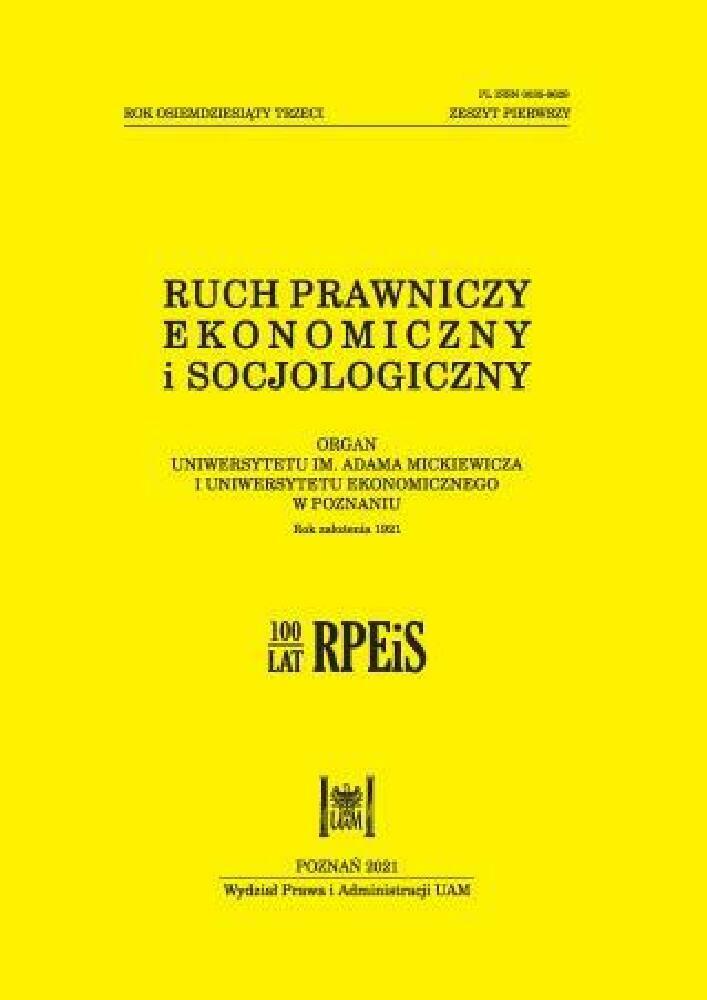Abstract
This paper sets out to explore the contribution of JESSICA projects to enhancing the territorial
cohesion of urban areas. We apply a slightly modified TARGET_TIA methodology to assess the
territorial impacts of those projects in the city of Poznań. It is found that the JESSICA projects
brought about positive territorial effects in deprived urban areas, however, their impacts are
quite varied. More exactly, the results demonstrate that projects which most closely addressed
the specific needs of the particular urban areas make the greatest contribution to improving the
territorial cohesion of a city. It is also suggested that the complexity of JESSICA projects should
have a higher priority in granting a JESSICA loan.
Funding
National Science Centre (Poland)
References
Barca, F., McCann, P., Rodríguez-Pose, A. (2012). The case for regional development intervention: place-based versus place-neutral approaches. Journal of Regional Science 52(1): 134–152. doi:10.1111/j.1467-9787.2011.00756.x
Béres, A., Jablonszky, G., Laposa, T., Nyikos, G. (2019). Spatial econometrics: transport infrastructure development and real estate values in Budapest. Regional Statistics 9(2): 1–17. doi:10.15196/RS0902
Bode, M. (2015). Financial instruments in cohesion policy. European Structural and Investment Funds Journal 3(3): 173–186.
Böhme, K., Doucet, P., Komornicki, T., Zaucha, J., Swiatek, D. (2011). How to Strengthen the Territorial Dimension of “Europe 2020” and the EU Cohesion Policy. Warsaw.
Budde, R., Ehlert, C., Neumann, U., Peistrup, M., Grabow, B., Hollbach-Grömig, B., Bergs, R. (2010). Second State of European Cities Report. Essen. <https://ec.europa.eu/regional_policy/sources/docgener/studies/pdf/urban/stateofcities_2010.pdf>.
Camagni, R., Capello, R., Caragliu, A. (2015). The rise of second-rank cities: what role for agglomeration economies? European Planning Studies 23(6): 1069–1089. doi:10.1080/09654313.2014.904999
Castells-Quintana, D., Royuela, V. (2014). Agglomeration, inequality and economic growth. The Annals of Regional Science 52(2): 343–366. doi:10.1007/s00168-014-0589-1
Colini, L., Czischke, D., Güntner, S., Tosics, I., Ramsden, P. (2013). Against divided cities in Europe. Saint-Denis. <https://urbact.eu/sites/default/files/import/general_library/19765_Urbact_WS4_DIVIDED_low_FINAL.pdf>.
Dąbrowski, M. (2014). Engineering multilevel governance? Joint European support for Sustainable Investment in City Areas (JESSICA) and the involvement of private and financial actors in urban development policy. Regional Studies 48(12): 2006–2019. doi:10.1080/00343404.2014.914625
Duranton, G., Kerr, W. (2018). The Logic of Agglomeration, [in:] G.L. Clark, M.P. Feldman, M.S. Gertler, D. Wójcik (eds.), The New Oxford Handbook of Economic Geography. New York: Oxford University Press. doi:10.1093/oxfordhb/9780198755609.013.14
ESPON. (2012). Territorial Impact Assessment of Policies and EU Directives. Luxembourg.
Faludi, A. (2009). Territorial cohesion under the looking glass. Synthesis paper about the history of the concept and policy background to territorial cohesion. <https://ec.europa.eu/regional_policy/archive/consultation/terco/pdf/lookingglass.pdf>.
Fotino, F. (2014). The JESSICA Action in Italy 2007–2013. Bottlenecks, opportunities, and directions for the future. European Structural and Investment Funds Journal 2(3): 245–255. <https://estif.lexxion.eu/article/ESTIF/2014/3/9>.
Glaeser, E.L. (2010). Agglomeration Economics. (E.L. Glaeser, Ed.). Chicago: University of Chicago Press.
Henderson, J.V. (2000). How Urban Concentration Affects Economic Growth. World Bank Policy Research Working Paper. <https://ssrn.com/abstract=630698>.
Idczak, P., Musiałkowska, I. (2019). The capacity of JESSICA Projects to repay loans based on own revenues. Entrepreneurial Business and Economics Review 7(2): 141–157. doi:10.15678/EBER.2019.070208
Idczak, P., Musiałkowska, I., Mrozik, K. (2019). Zdolność projektów JESSICA do oddziaływania na procesy rynkowe w miastach. Biuletyn KPZK 273/274: 202–222.
Krugman, P. (1991). Increasing returns and economic geography. Journal of Political Economy 99(3): 483–499. doi:10.1086/261763
Medeiros, E. (2014). Territorial Impact Assessment (TIA). The Process, Methods, Techniques (ZOE | Dinâ). Lisbon: Centro de Estudos Geográficos.
Medeiros, E. (2016). Territorial cohesion: an EU concept. European Journal of Spatial Development 60: 1–30. <https://archive.nordregio.se/Global/EJSD/Refereed articles/refereed60.pdf>
Medeiros, E. (2019). Debating the urban dimension of territorial cohesion, [in:] E. Medeiros (ed.), Territorial Cohesion. The Urban Dimension (pp. 3–22). Bassel: Springer International Publishing. doi:10.1007/978-3-030-03386-6_1
Musiałkowska, I., Idczak, P. (2018). Is the JESSICA initiative truly repayable instrument? The Polish case study. Research Papers of Wrocław University of Economics 536: 143–151. doi:10.15611/pn.2018.536.13
Musiałkowska, I., Idczak, P. (2020). JESSICA initiative to support sustainable urban development projects in Poland, [in:] P. Idczak, I. Musiałkowska, O. Potluka (eds.), EU Cohesion
Policy in Eastern and Southern Europe: Taking Stock and Drawing Lessons for the Future (pp. 169–200). Warsaw/Berlin: De Gruyter. doi:10.1515/9788395720451-009
Myrdal, G. (1957). Economic Theory and Under-Developed Regions. London: G. Duckworth.
Nadler, M., Nadler, C. (2018). Promoting investment in sustainable urban development with JESSICA: outcomes of a new EU policy initiative. Urban Studies 55(9): 1839–1858. doi:10.1177/0042098017702815
Nyikos, G. (2016). Financial Instruments in the 2014–20 Programming Period: First Experiencesof Member States. Brussels: European Parliament, Policy Department B: Structural andCohesion Policies. doi:10.2861/279642
Ramsden, P. (2011). Cities and Disadvantaged Neighbourhoods. <https://urbact.eu/sites/default/files/import/general_library/Rapport_Urbact_II.pdf>.
Tosics, I. (2015). Integrated regeneration of deprived areas and the new cohesion policy approach. <https://urbact.eu/sites/default/files/20150909_urbact_deprived-areas_gb_md_1.pdf>.
URBACT. (2010). J4C “Jessica For Cities”. Working Group Guidelines Assessment and Criteria for “Jessicability” of Projects and Case Studies for the Application of “Jessica” Instrument. <http://urbact.eu/sites/default/files/import/Projects/JESSICA_4_Cities/outputs_media/J4C_Guidelines_Jessicability.pdf>.
URPofP. (2013). Urban Regeneration Programme for the city of Poznań – 3rd edition. <https://www.poznan.pl/mim/public/main/attachments.att?co=show&instance=1017&parent=81623&lang=pl&id=238308>.
License
Copyright (c) 2021 WPiA UAM

This work is licensed under a Creative Commons Attribution-NonCommercial-NoDerivatives 4.0 International License.





